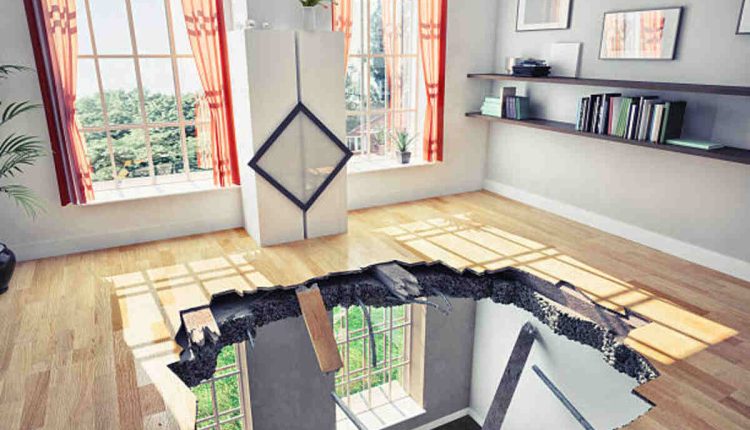New York City expanded its street grid into uptown Manhattan in 1889 and planned to extend West 111th Street directly through Polo Grounds, sparking widespread disapproval among many New Yorkers. Choose the best Demolition Contractor Chandler.
The Polo Grounds witnessed one of the most dramatic World Series in history. On April 10, 1964, sixty Giants jersey-wearing crewmen began demolishing Ebbets Field using a wrecking ball painted to look like a baseball.
The History of the Polo Grounds
Few sports stadiums in America boast as storied a history as the Polo Grounds in New York City. It was home to both of New York City’s baseball teams and one of Major League Baseball’s most beloved figures: Christy Mathewson. Furthermore, five iterations of baseball’s ultimate team have played there, and its history forms part of America’s rich baseball heritage.
At approximately 4:30 a.m. on April 14, 1911, fire raged through Polo Grounds. Thanks to gaps in its wooden sections, most of its structures escaped destruction; otherwise, had not firemen been present quickly, the disaster would have been far more catastrophic.
The Polo Grounds served as home to New York’s two major league baseball teams for more than four decades, hosting both of New York’s major league teams for decades. Over that time, the Giants won five World Series and enjoyed eight winning seasons during that time; unfortunately, they weren’t as effective due to Charles Dillon Freedman, who often clashed with managers, clashed with star players, and banned reporters who did not support his agenda.
Freedman was known for being an outrageous showman who would parade naked women around the field to amuse his fans and was embroiled in a lengthy legal battle with the Coogan family, owners of Harlem property where Polo Grounds once stood. Not until the late 1950s, when the Giants moved into Shea Stadium, did this feud come to an end between the Coogan family members and the New York City government finally subside.
After the Giants left, Polo Grounds became home to boxing matches and other events—including Jack Dempsey vs. Luis Firpo in 1923 for the heavyweight championship and Gary Cooper appearing in the 1932 film The Crow.
The Polo Grounds served as an oval race track for stock car racing in 1958 and 1959. In 1963, a Latin American All-Star baseball game was held there.
Today, the Polo Grounds Towers stand where its stadium once did. Now transformed into public housing for families with moderate to low incomes, this complex is an example of how New York can adapt and reimagine its cityscape to meet challenges that arise in diverse urban environments such as ours. Our diversity brought people together through sports such as baseball and other athletic events at Polo Grounds stadium; now, this living reminder stands as proof of how vitality needs to remain an affordable reality in New York neighborhoods.
The History of Polo Grounds II
As professional baseball became more and more popular during the late nineteenth century, Polo Grounds quickly developed from a simple field in Central Park to various iterations of stadiums. These changes may have been driven by fan demand or changes to the game itself; regardless, each venue offered something distinct to enhance fans’ ballpark experiences and mark an exciting period of city growth and development. These iterations of Polo Grounds make fascinating examinations as time capsules.
The original Polo Grounds was constructed in 1876 for polo matches, seating just under 10,000 fans at that time. As interest in polo continued to increase, its capacity improved considerably and eventually reached almost three times more fans.
Early in the 1880s, John B. Day leased part of Polo Grounds for his semi-pro team known as the Metropolitans to play on. Soon after that, they upgraded themselves to major league status in the National League and were joined by Troy Trojans, who formed what is today known as the Giants baseball team.
On April 14th, 1911, fire engulfed the primary wooden structure surrounding home plate, but thanks to gaps between sections of bleachers, it spared most outfield seating and the clubhouse from destruction. While this structure was being built, they remained in Manhattan for ten weeks while their concrete and steel replacement was being constructed, eventually moving to Hilltop Park, which at that time housed the American League New York Yankees.
Though the New York Giants were able to rebuild, it wasn’t in the same manner as in prior iterations at Polo Grounds. Owner Bill Freedman became notorious for firing managers at an alarming rate—much to George Steinbrenner’s dismay—clashing with star players, barring umpires he didn’t like, and more. Additionally, he advocated for an inauthentic style of syndicate baseball, which many fellow owners disapproved of, eventually leading to his ousting from ownership of the Giants.
John Brush acquired both the Giants from Freedman as well as their lease to Manhattan Field/ New Polo Grounds/ Polo Grounds II, beginning a process of dismantlement and use as spare parts to construct Polo Grounds III, which opened for play in June 1911, seating around 31,000 fans with original wooden structures being enhanced with upper/lower deck seating options as well as more expansive deep right field features – this version witnessed Babe Ruth hitting his first home run as a New York Yankee which traveled about 500 feet into adjacent Manhattan Field!


